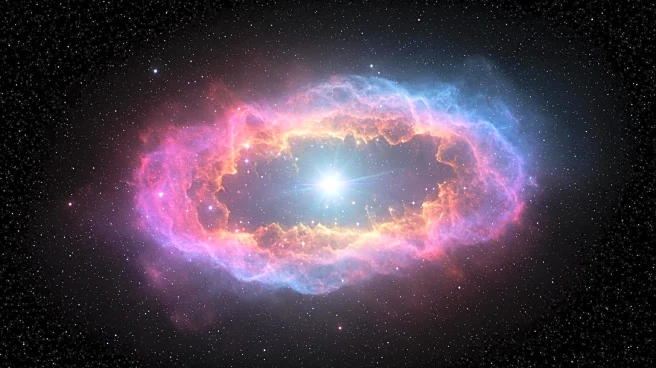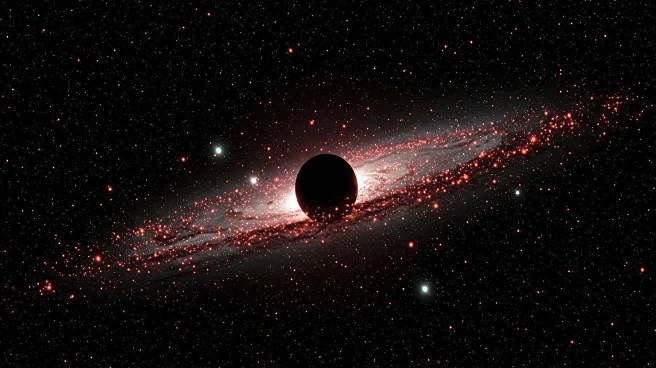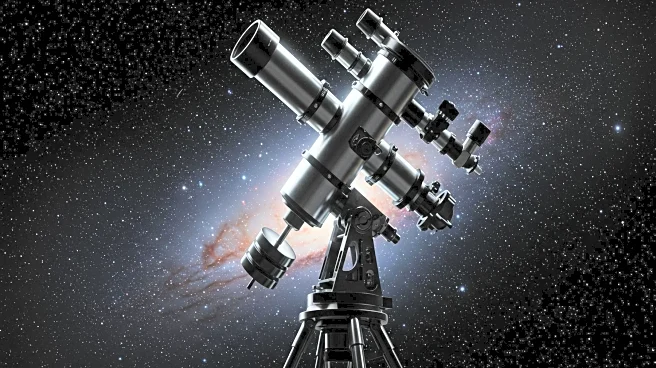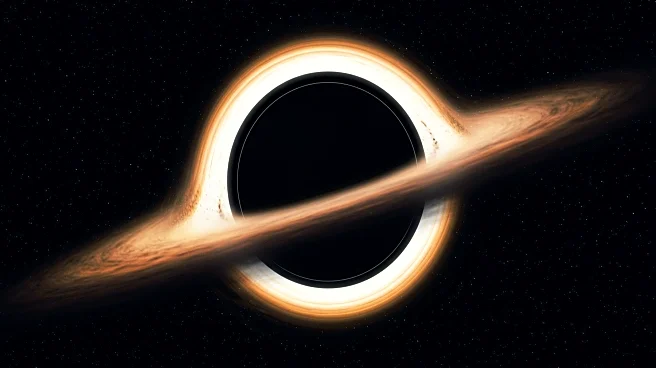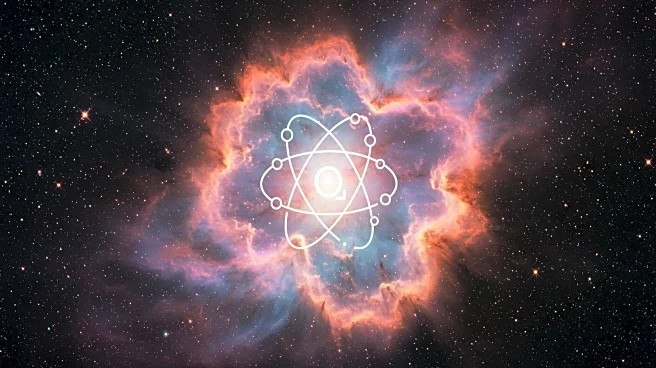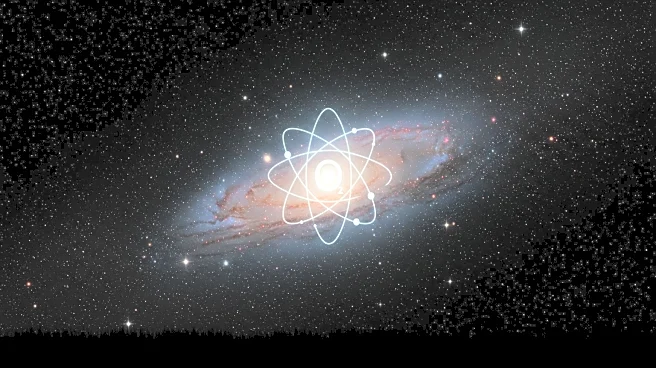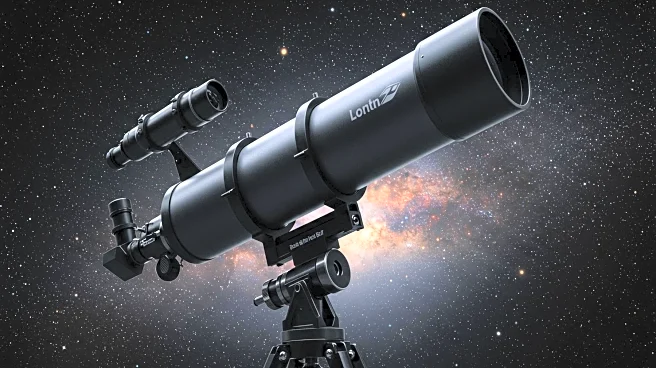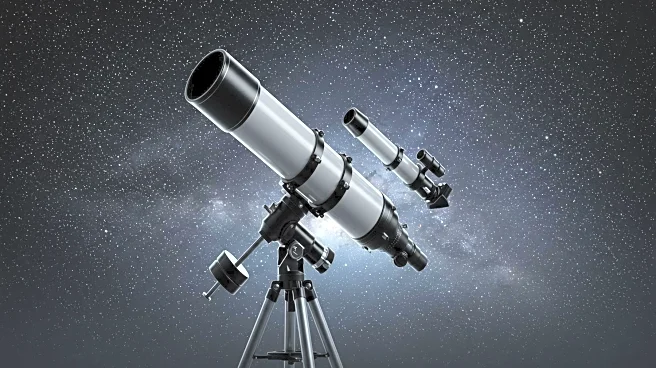What is the story about?
What's Happening?
Astronomers have detected the oldest fast radio burst (FRB) ever recorded, originating from a galaxy that existed 3 billion years after the Big Bang. This discovery was made by Manisha Caleb and her team at the University of Sydney using the MeerKAT radio telescope in South Africa, followed by observations from the James Webb Space Telescope. The FRB, named 20240304B, comes from a small, faint galaxy that was relatively young at the time of emission and had formed its stars rapidly. Fast radio bursts are short, powerful blasts of radio-frequency light, believed to be produced by magnetars, a type of neutron star. This particular FRB is significant because it comes from a period known as cosmic noon, when star formation was at its peak.
Why It's Important?
The discovery of FRB 20240304B is crucial for understanding the distribution of ionized gas in the universe, which is essential for mapping the formation of stars and galaxies. Ionized gas, which has lost electrons due to radiation from stars, constitutes the majority of matter in the universe. FRBs serve as a source of light that can illuminate this gas, allowing astronomers to map it and study the magnetic fields between stars and galaxies. This FRB provides insights into the timeline of star formation and the ionization of gas, offering a glimpse into the early universe's conditions and the processes that led to the formation of larger cosmic structures.
What's Next?
The discovery of FRB 20240304B opens the possibility of finding even more distant FRBs, which could further enhance our understanding of the early universe. By identifying additional FRBs from similar or earlier periods, astronomers can refine the timeline of star formation and ionization processes. This ongoing research may lead to new insights into the evolution of galaxies and the role of magnetars in producing FRBs. Continued observations using advanced telescopes like the James Webb Space Telescope will be crucial in uncovering more about these enigmatic bursts and their implications for cosmic history.
Beyond the Headlines
The detection of such distant FRBs also raises questions about the nature and lifecycle of magnetars, as well as the conditions that lead to their formation. Understanding these processes could have broader implications for astrophysics, including the study of neutron stars and the dynamics of supernovae. Additionally, the ability to map ionized gas using FRBs may contribute to advancements in cosmology, helping to resolve questions about the universe's expansion and the distribution of dark matter.
AI Generated Content
Do you find this article useful?
